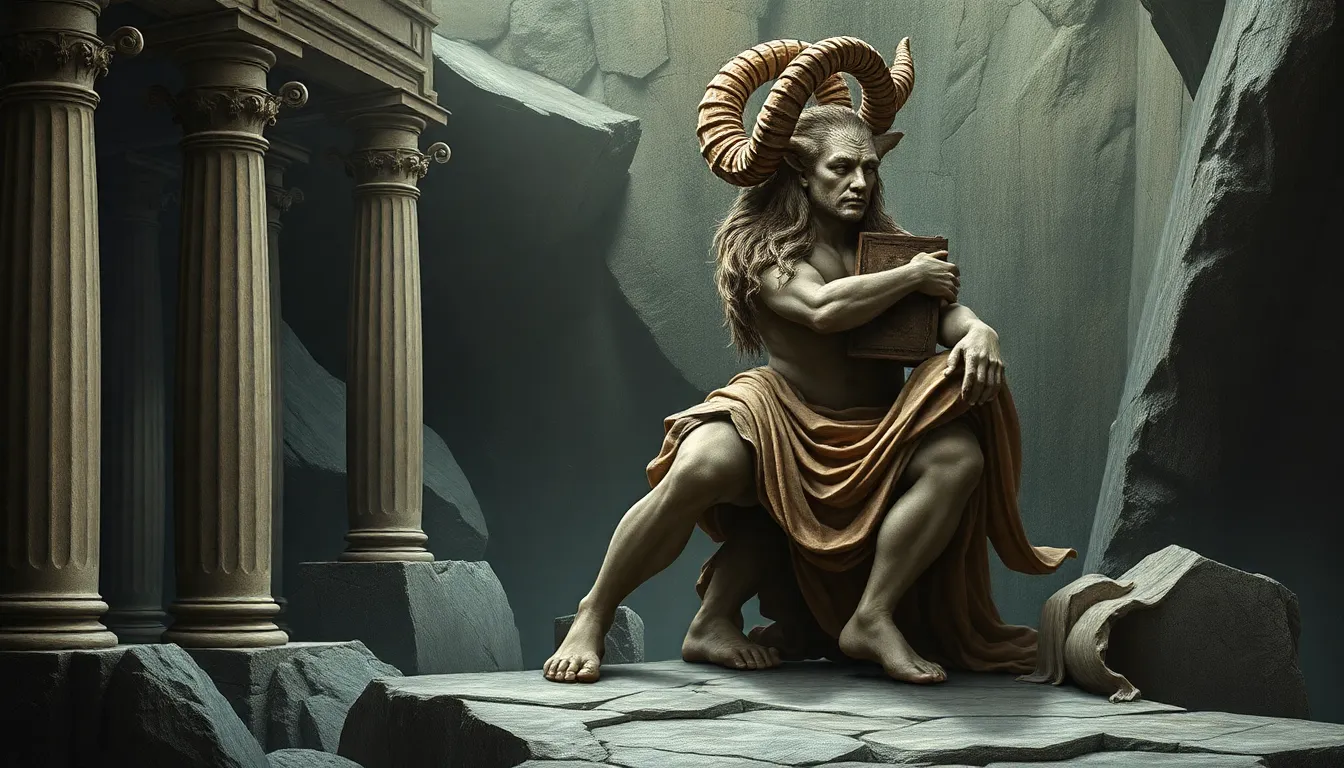The Satyr’s Influence on Literary Archetypes in Fantasy Genres
I. Introduction
In the rich tapestry of Greek mythology, satyrs are depicted as half-human, half-goat beings known for their connection to Dionysus, the god of wine, fertility, and revelry. These creatures are characterized by their playful nature, embodying both the wildness of nature and the complexities of human behavior. In literature, satyrs have emerged as significant archetypes that influence narratives across various genres, particularly in fantasy.
This article delves into the satyr’s impact on literary archetypes within the fantasy genre, exploring their historical roots, characteristics, representations in literature, and their broader implications in world-building and popular culture.
II. Historical Roots of the Satyr Archetype
The origin of satyrs can be traced back to ancient Greek mythology, where they are often associated with Dionysian rituals and celebrations. These beings symbolize the unrestrained aspects of nature, embodying the duality of wildness and civilization.
Over centuries, the satyr figure evolved beyond its mythological roots:
- In the Renaissance, satyrs were often depicted in art and literature as symbols of carnal temptation and natural instinct.
- Folklore across various cultures adopted similar figures, showcasing a blend of human and animal traits, reinforcing the satyr’s enduring relevance.
Moreover, the satyr’s influence can be seen in early literary works, where they often serve as both comic relief and profound symbols of deeper philosophical themes.
III. Characteristics of the Satyr Archetype
The satyr archetype is rich in both physical and behavioral traits:
A. Physical traits and symbolism
Satyrs are typically depicted with human-like upper bodies and the legs and features of a goat. This physicality symbolizes:
- The connection to nature and the wild.
- The embodiment of primal instincts and desires.
B. Behavioral traits: revelry, mischief, and wisdom
Behaviorally, satyrs are known for their:
- Celebration of life through music, dance, and feasting.
- Pranks and mischief, often challenging societal norms.
- Unexpected wisdom, often imparted in humorous or irreverent ways.
C. Duality of the satyr: wildness and sophistication
This duality makes satyrs complex characters, balancing their wild, carefree nature with moments of insight and sophistication that reflect deeper truths about humanity.
IV. The Satyr in Fantasy Literature
In fantasy literature, satyrs have found a diverse range of representations:
A. Prominent examples in classic fantasy works
Classic works often feature satyr-like characters, such as:
- Pan in pastoral poetry, representing nature’s beauty and chaos.
- Characters in Shakespeare’s plays, who embody mischief and revelry.
B. Analysis of satyr-like characters in modern fantasy
Modern fantasy literature continues to explore satyr-like figures, often blending them with other archetypes:
- In C.S. Lewis’s “The Chronicles of Narnia,” the character of Mr. Tumnus resonates with satyr characteristics, serving as a guide and protector.
- In contemporary works, satyrs often appear as allies or mentors, guiding heroes through their journeys.
C. Comparison with other mythological beings in fantasy genres
When comparing satyrs to other mythological beings:
- They share similarities with fauns and elves, often embodying a strong connection to nature.
- Unlike more malevolent creatures like demons or trolls, satyrs typically represent a more playful, chaotic aspect of nature.
V. The Role of Satyrs in World-Building
Satyr-like beings are often incorporated into fictional universes, enriching the world-building process:
A. Incorporation of satyr-like beings in fictional universes
Authors use satyrs to populate their worlds, adding depth and diversity:
- They serve as guardians of nature, reflecting environmental themes.
- They often act as intermediaries between humans and the natural world.
B. Cultural implications of satyrs in fantasy settings
In fantasy settings, satyrs often represent:
- Cultural celebrations of life and nature.
- Conflict between civilization and the wild.
C. Satyrs as a device for exploring themes of nature and civilization
Their presence allows authors to explore the delicate balance between nature’s wildness and human civilization, often leading to thought-provoking narratives.
VI. Influence on Other Literary Archetypes
The satyr archetype resonates with various other literary archetypes:
A. Connections between satyrs and other archetypes (e.g., the trickster, the mentor)
Satyrs share traits with:
- The trickster archetype, challenging societal norms and expectations.
- The mentor figure, guiding protagonists through their journeys.
B. The satyr as a catalyst for character development
Characters influenced by satyrs often undergo significant growth, learning to embrace their wildness or seek balance in their lives.
C. Reimagining the satyr archetype in contemporary narratives
Contemporary authors continue to reimagine satyrs, often infusing them with modern sensibilities and challenges, making them relevant in today’s literary landscape.
VII. The Satyr’s Impact on Popular Culture
Satyrs have permeated popular culture significantly:
A. Representation of satyrs in films, games, and comics
In modern media, satyrs are depicted in various forms:
- Films like “Percy Jackson & The Olympians” feature satyr characters that appeal to younger audiences.
- Video games often include satyr-like characters as playable figures or quest-givers.
B. The satyr’s legacy in pop culture and its influence on new creators
The legacy of satyrs influences new creators, encouraging them to explore themes of nature, revelry, and the complexities of human emotion.
C. Case studies of notable satyr-inspired characters in modern media
Notable examples include:
- Grover Underwood from “Percy Jackson,” a satyr who embodies loyalty and adventure.
- Mr. Tumnus from “The Chronicles of Narnia,” who represents both the playful and wise aspects of the satyr archetype.
VIII. Conclusion
In summary, the satyr’s influence on fantasy literary archetypes is profound and multifaceted. From their historical roots in Greek mythology to their modern representations in literature and popular culture, satyrs embody a unique blend of wildness and wisdom that continues to resonate with audiences.
The enduring appeal of satyrs in storytelling lies in their ability to challenge societal norms, explore themes of nature and civilization, and facilitate character development. As literature continues to evolve, the satyr archetype is likely to find new life and relevance, inspiring future generations of creators to explore the rich complexities of this fascinating figure.




